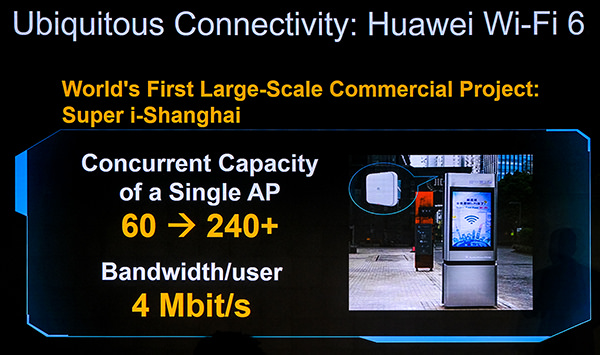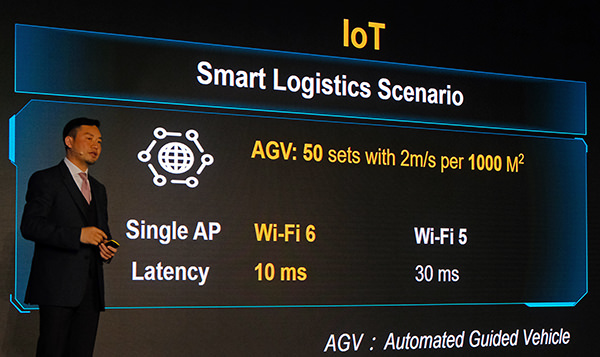Wi-Fi is not dead, according to Huawei and its AP Wi-Fi 6
Wi-Fi is not dead, even with the arrival of 5G. Thanks to the new WiFi 6 standard 802.11ax some of the major current limits will be exceeded. Terminals are coming, but Hauwei is ready with the first Wi-Fi 6 Access Point.
” When many 4G LTE arrived, Wi-Fi was dead. But it is alive and well. Now with the arrival of 5G NR, the same number thinks the same thing. But Wi-Fi connections will continue to exist and coexist with those 5G, both responding to different needs, especially now that with the arrival of Wi-Fi 6 we will overcome some of the limitations that everyone experiences today using Wi-Fi connections “.
In summary, this is the response of Qiu Heng – President of Global Marketing, Huawei Enterprise Business Group – to a question from a US colleague during a meeting with journalists after the Pre-MWC press conference in London.
Huawei strongly believes in the development of Wi-Fi: on the one hand, it is very actively participating in the finalization of the 802.11ax standard (Wi-Fi 6), with one of its directors holding the presidency of the working group that is putting the finishing touches to the specific and on the other coming on the market with the first Access Point based on the new standard.
” Huawei is ready with the AP Wi-Fi 6, but do we need an ecosystem of products to make the most of the benefits, in this sense, how are we put in? ” – this is my question to Qiu Heng. ” The next Huawei smartphones will support this new technology and there will be more news coming up.
The ecosystem will grow rapidly, there is a lot of interest around Wi-Fi 6. After announcing the Access Point we are mumbling with requests about specific and prices, companies and companies cannot wait to have it in their hands. Already at the Mobile World Congress there will be news about the ecosystem of compatible devices “.
What does the Wi-Fi 6 802.11ax standard promise?
Greater bandwidth up to 10 Gbps with the new Huawei AP Wi-Fi 6, also thanks to 8×8 MIMO, OFDMA and 1024QAM modulation and demodulation.
Greater capacity, with the possibility of managing more than 240 users connected by access point, compared to 60 of the current standard, a boon for Wi-Fi hot-spots in densely occupied areas. The coverage will also be greater, which can increase by 40% compared to the current one.
Less latency, which will drop from 30 milliseconds to 10 milliseconds, allowing the use of virtual reality also via Wi-Fi.
The features of the new standard are also very interesting in the industrial sector, where the IoT will have a real turning point even on a Wi-Fi network. The low latency and increased coverage will allow – for example – to use the Wi-Fi network to control the 50 autonomous driving vehicles AGV (Automatic Guided Vehicle) in the field of logistics on areas up to 1,000 square meters and with speed of movement up 2 meters per second.
Two further questions from the round table with journalists. One on the competition, precisely in manufacturing and logistics with 5G, a technology that is given to finally complete the path to industry 4.0. ” These are two technologies that can be complementary and respond to different needs. Think only of network ownership: with 5G the network will be mainly owned by the operator, while with Wi-Fi it is the company that owns the network. They prefer to keep all the data on their network, in this sense Wi-Fi is the most natural choice. ”
The other regarding the standard, which has not yet been finalized. ” Only the last touches are missing ” – replied Qiu Heng – ” Our products can be made compatible with the final standard through small software adjustments “.
Are you part of that band that fights with Wi-Fi every time it’s around the world and needs a connection? When you change your devices, pay attention to which Wi-Fi standard, they support the difference promises to be decidedly obvious. An example: the new Samsung Galaxy S10, presented are already compatible with Wi-Fi 6.



